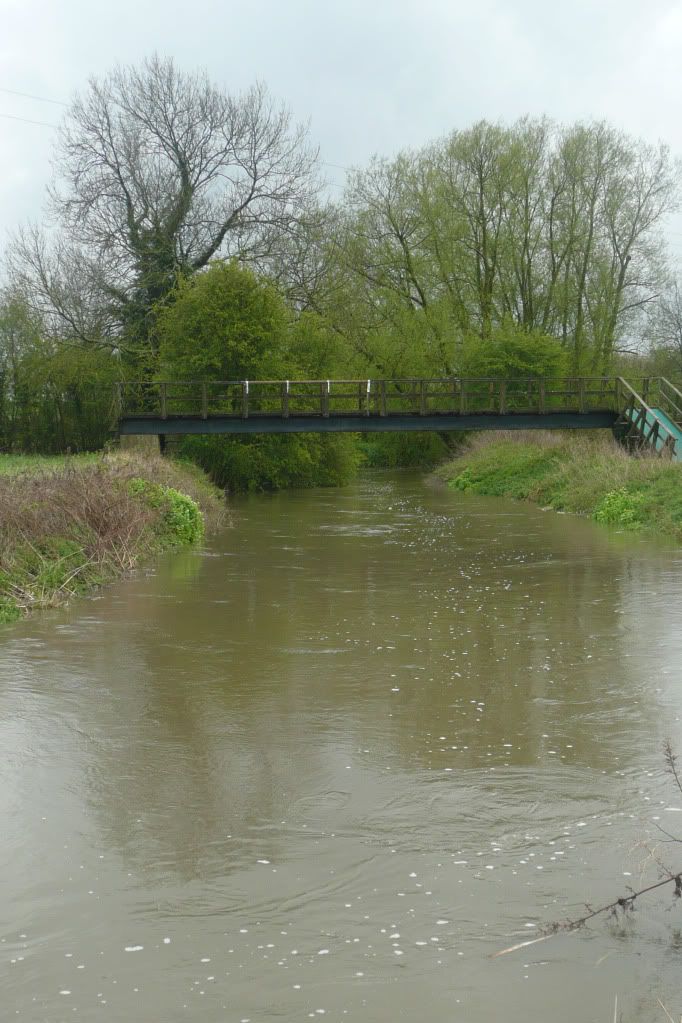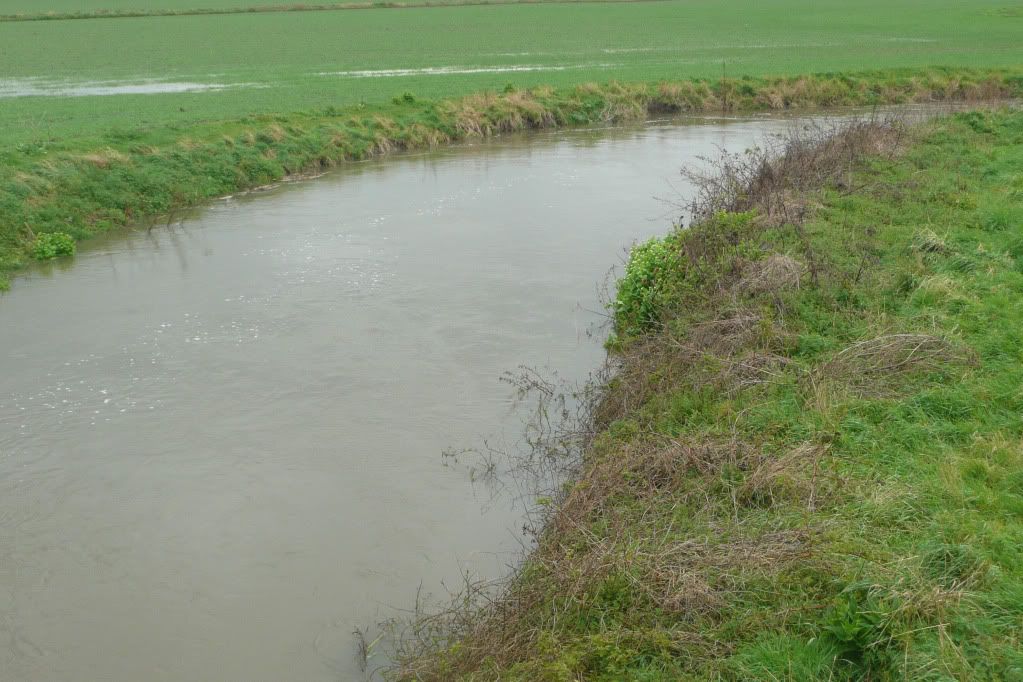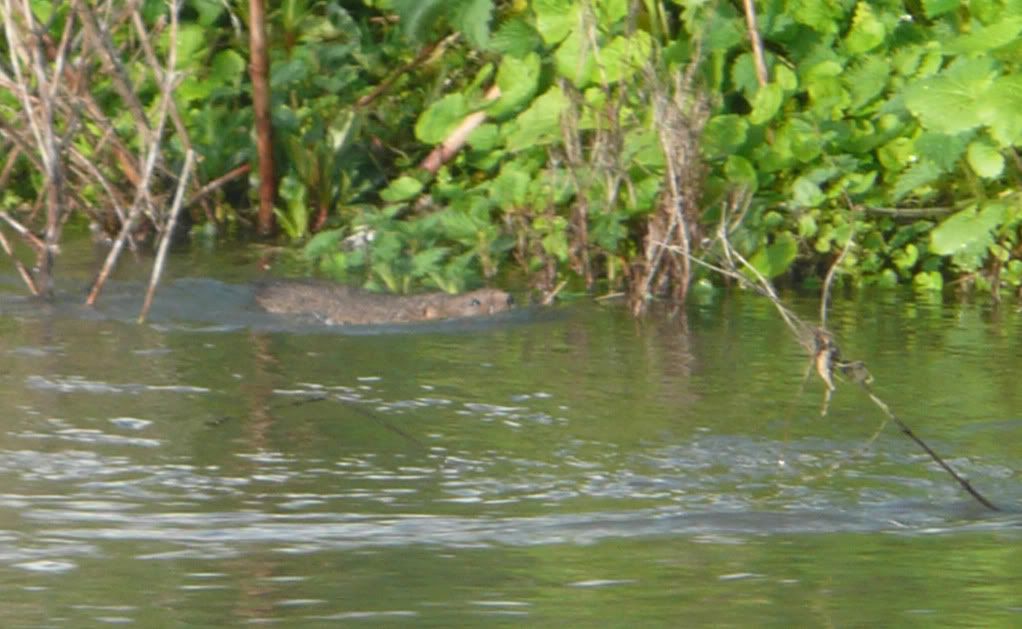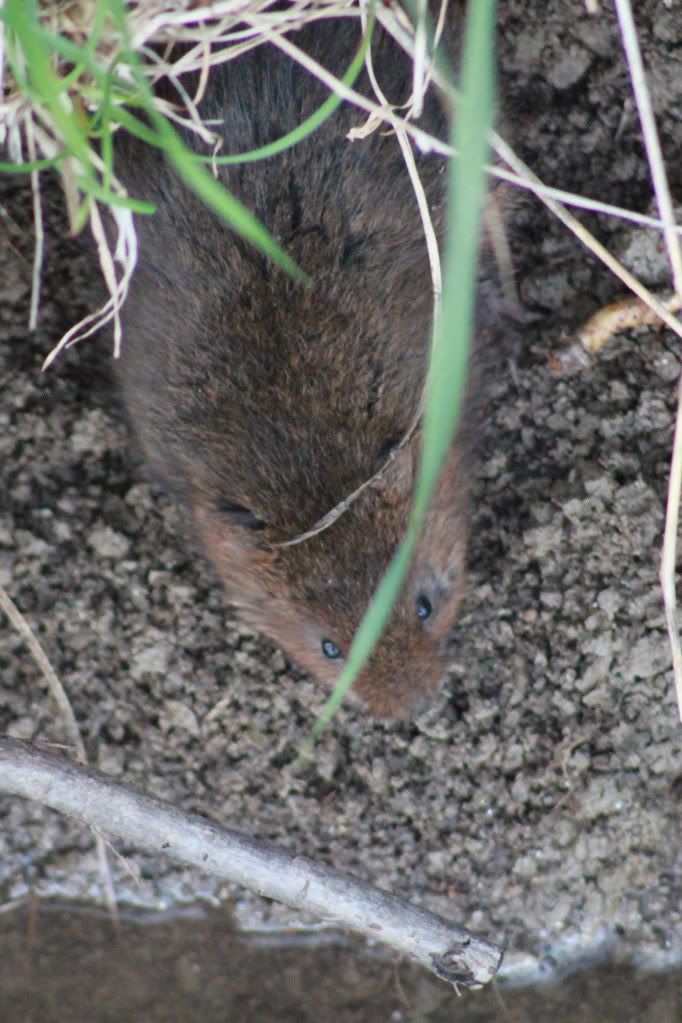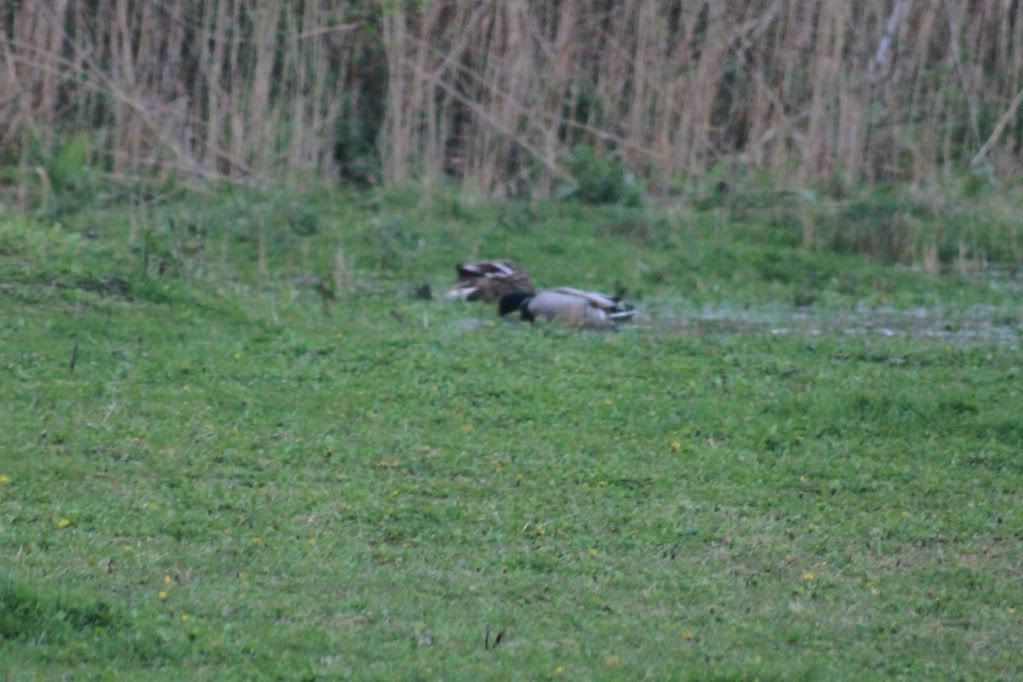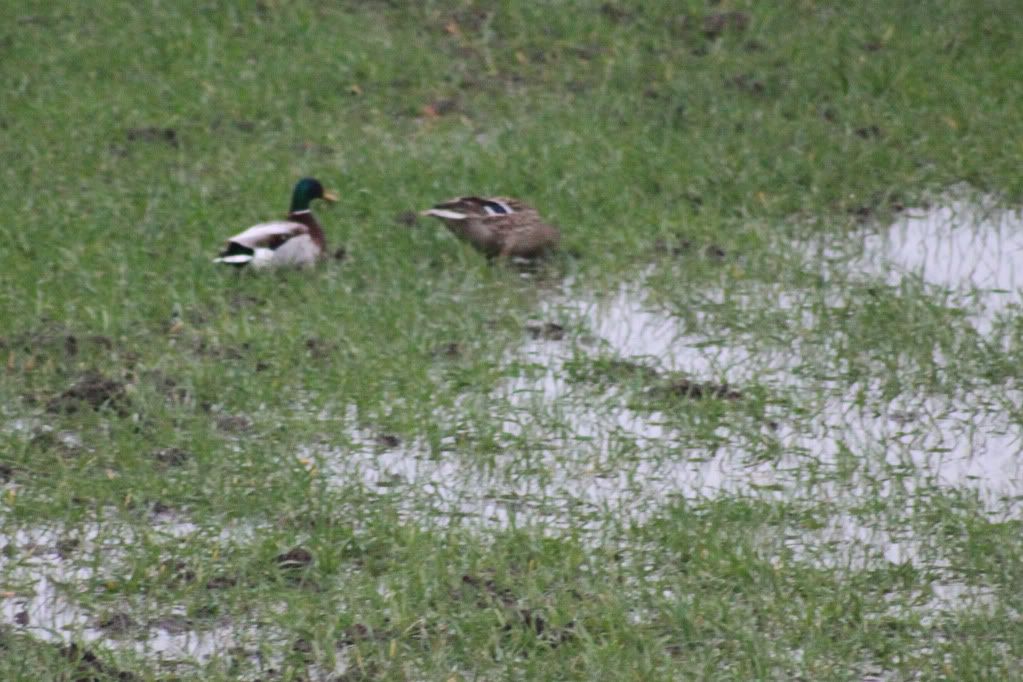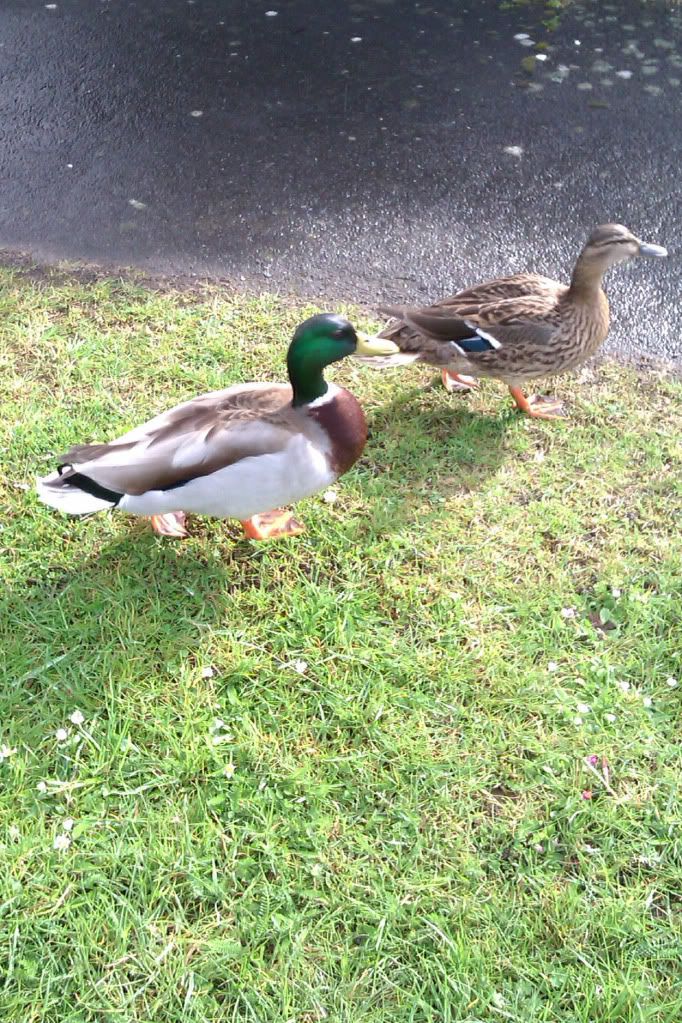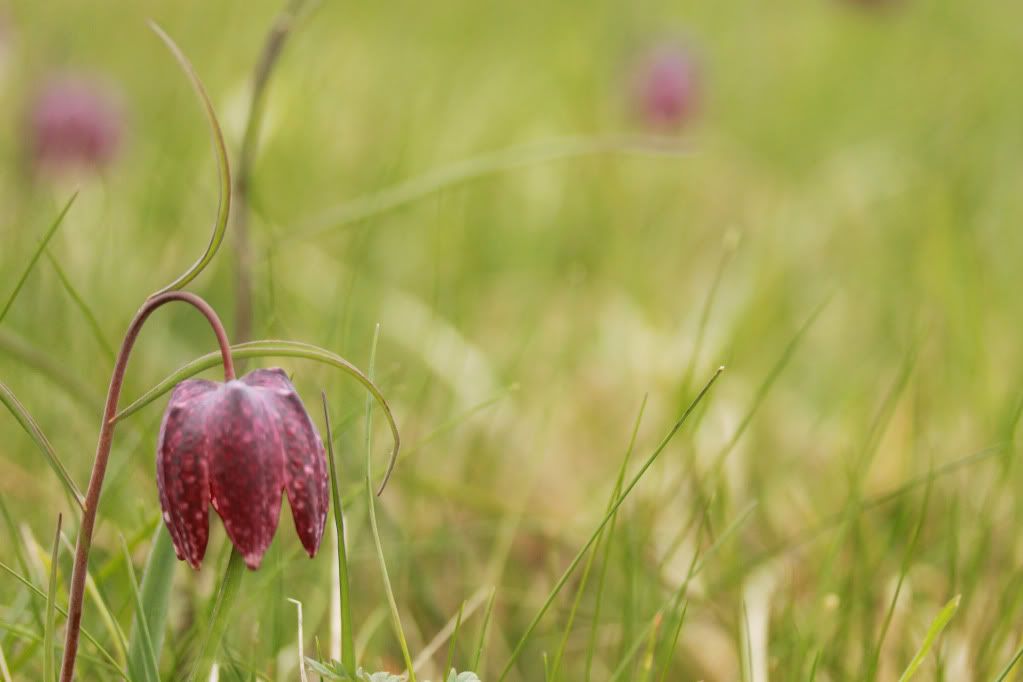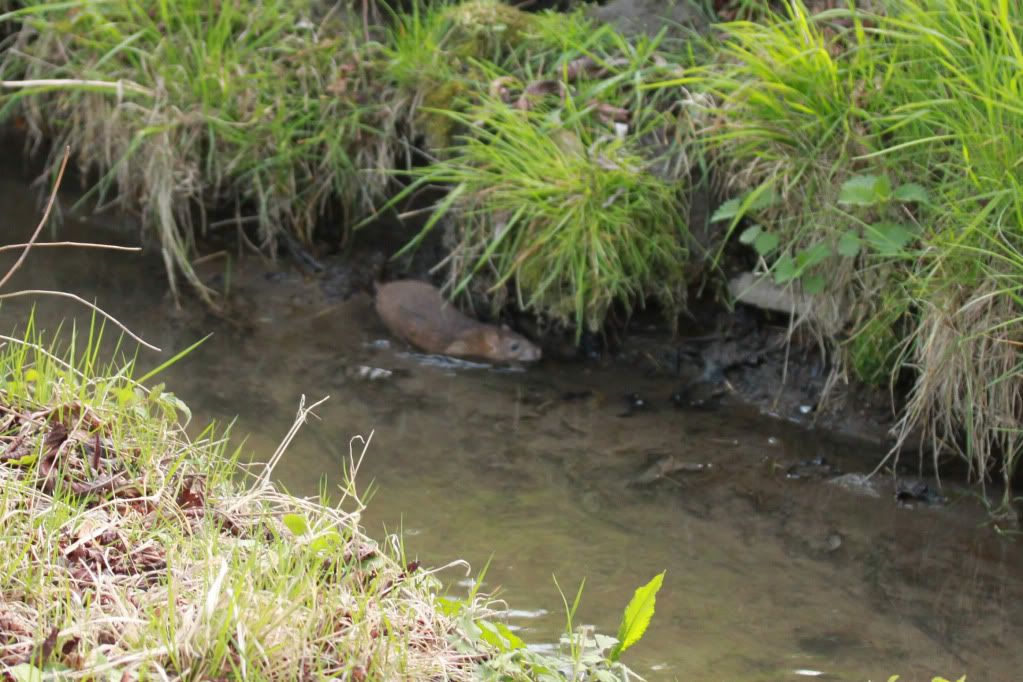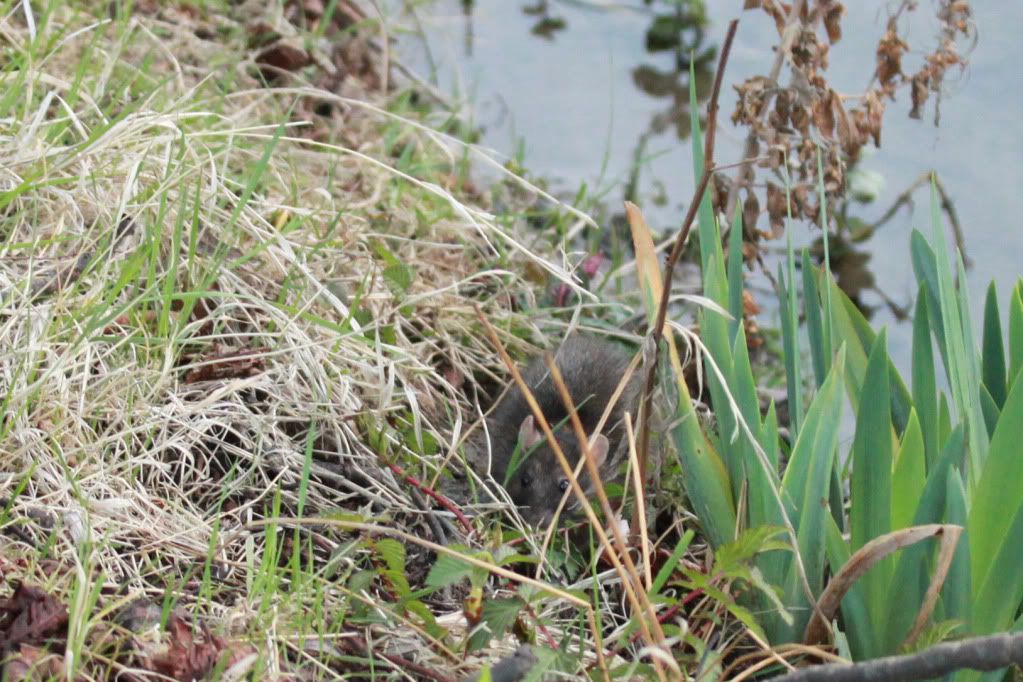On Sunday (29th April), the river - to the west of the A34 - was put on flood alert: http://www.environment-agency.gov.uk/homeandleisure/floods/34681.aspx?area=061WAF17Ock&page=1&type=Town&term=abingdon
The river currently has a height of 0.5m (at the time of writing) and it is still within it's typical range of 0 to 0.8m (but well below the record of 1.7m, recorded in 2007):
http://www.environment-agency.gov.uk/homeandleisure/floods/riverlevels/136495.aspx?stationId=7081
.
.
.
Some of the wildlife is struggling with this sudden downpour - their nests may not yet be flooded, but the kingfishers would be struggling to catch fish in such fast water and this moorhen nest seems to have been abandoned:
.
.
Yet, perhaps surprisingly, the water voles are still active and even swimming up and down stream:
.
.
.
Or peering, seemingly apprehensively, out of their burrows:
.
.
Whilst the Ock water voles are coping with the high water levels, other colonies may not be so lucky. The water voles in Radley Brook not only have to cope with mink in the vicinity, but once again, the Thames has burst it's banks:
.
.
And with yet more rain forecast for the forthcoming week, life is only going to get harder for everything that depends - one way or other - upon the river for it's survival.
Wildlife and other things of interest on and around the river Ock in south Oxfordshire
Sunday 29 April 2012
Saturday 28 April 2012
Nice weather for ducks
During spring, the mallards form pairs and can often be seen on the river, sometimes the female can attract the (sometimes unwanted attention) of other males.
But as the rain has continued to fall, the river has swelled and the ducks can now be found in other places:
This pair were on the Ock meadow:
.
.
Whilst pair were making the most of a puddle on the opposite side of the river
.
.
And this pair have forsaken the river altogether and were walking past our house:
.
But as the rain has continued to fall, the river has swelled and the ducks can now be found in other places:
This pair were on the Ock meadow:
.
.
Whilst pair were making the most of a puddle on the opposite side of the river
.
.
And this pair have forsaken the river altogether and were walking past our house:
.
Sunday 15 April 2012
Fritillary Sunday at Ducklington
Situated near the River Windrush, the fritillary meadow near the village of Ducklington is open to public on only way day a year (http://www.ducklingtonchurch.org.uk/events/fritillary/the-background-to-fritillary-sunday/).
Unlike Iffley meadows, there are more fritillaries in a smaller area and despite the cold wind and lack of sun, it is an impressive sight on a Sunday afternoon:
.
.
.
.
Although they are not normally known for attracting bees, they were several making the most of the short time span the flowers are in bloom:
.
.
.
And on the village pond, appropriately in the village of Ducklington, were the first ducklings of the year.
.
Another impressive display of snake's head fritillaries can be found at Magdalen College in Oxford http://viewsoftheock.blogspot.co.uk/2016/04/the-flowers-of-magdalen-college.html
Unlike Iffley meadows, there are more fritillaries in a smaller area and despite the cold wind and lack of sun, it is an impressive sight on a Sunday afternoon:
.
.
.
Although they are not normally known for attracting bees, they were several making the most of the short time span the flowers are in bloom:
.
.
.
.
Another impressive display of snake's head fritillaries can be found at Magdalen College in Oxford http://viewsoftheock.blogspot.co.uk/2016/04/the-flowers-of-magdalen-college.html
Friday 13 April 2012
The flower of Oxfordshire
From a distance, the snake head fritillary can seem inconspicuous, but up close it seems more like a work of origami than a flower.
.
.
Once common, it has suffered a massive decline in recent years as their habitat, flood plains, has been drained and ploughed for agriculture.
This has made it nationally rare and the riverside meadows in Oxfordshire - like the BBOWT reserve at Iffley Meadows - are some of the few places where they can now be found.
.
..
Flowering in April and early May, most flowers are an elegant purple lantern with a white checked pattern.
.
.
Some are pure white and a few are white with a purple checked pattern.
.
.
As they are most often found in Oxfordshire, the charity Plantlife nominated it as the flower of Oxfordshire to help raise awareness of it's plight: http://www.plantlife.org.uk//wild_plants/plant_species/fritillary/
And Iffley Meadows is not the only place to find them, other notable sites are the grounds of Magdalen College (http://viewsoftheock.blogspot.co.uk/2016/04/the-flowers-of-magdalen-college.html in Oxford and for one day a year, the meadow near Ducklington Church is open to the public and this year it is Sunday 15th March
.
.
Once common, it has suffered a massive decline in recent years as their habitat, flood plains, has been drained and ploughed for agriculture.
This has made it nationally rare and the riverside meadows in Oxfordshire - like the BBOWT reserve at Iffley Meadows - are some of the few places where they can now be found.
.
..
Flowering in April and early May, most flowers are an elegant purple lantern with a white checked pattern.
.
.
Some are pure white and a few are white with a purple checked pattern.
.
.
As they are most often found in Oxfordshire, the charity Plantlife nominated it as the flower of Oxfordshire to help raise awareness of it's plight: http://www.plantlife.org.uk//wild_plants/plant_species/fritillary/
And Iffley Meadows is not the only place to find them, other notable sites are the grounds of Magdalen College (http://viewsoftheock.blogspot.co.uk/2016/04/the-flowers-of-magdalen-college.html in Oxford and for one day a year, the meadow near Ducklington Church is open to the public and this year it is Sunday 15th March
Monday 9 April 2012
Rattus norvegicus
Water voles are not the only small brown furry mammal found in the water ways of Oxfordshire - on many occasions it is more likely to be a brown rat.
.
.
They are so abundant it is hard to believe that they are not native, having originated in the far east, they were only first recorded in the UK in the 1970's.
One of the reasons they are so common is that they are prolific breeders, a female can have up to 10 litters per year (water voles have at most 4) and each litter can consist of up to 9 young (whilst a water vole has only 6 per litter) - hence (with the right conditions and sufficient food) a female rat can produce nearly 100 young in a year.
They are often considered a pest as they spread several diseases - salmonella & leptospirosis (Weil's disease) - hence it pays to be careful when doing water vole surveys.
Despite this, it always entertaining to watch a rat (they are very intelligent and can make good pets), even if - like this one - they are seen entering burrows, maybe seeking out young water voles, one of it's many sources of food - another thing which makes them so omnipresent
.
.
.
They are so abundant it is hard to believe that they are not native, having originated in the far east, they were only first recorded in the UK in the 1970's.
One of the reasons they are so common is that they are prolific breeders, a female can have up to 10 litters per year (water voles have at most 4) and each litter can consist of up to 9 young (whilst a water vole has only 6 per litter) - hence (with the right conditions and sufficient food) a female rat can produce nearly 100 young in a year.
They are often considered a pest as they spread several diseases - salmonella & leptospirosis (Weil's disease) - hence it pays to be careful when doing water vole surveys.
Despite this, it always entertaining to watch a rat (they are very intelligent and can make good pets), even if - like this one - they are seen entering burrows, maybe seeking out young water voles, one of it's many sources of food - another thing which makes them so omnipresent
.
Sunday 1 April 2012
Weekend water voles
This time of year, with the mild longer evenings, the lack of vegetation and the breeding season just starting is probably the best time to see water voles.
Even so, they can be hard to see lurking at the waters edge:
.
.
.
.
Or swimming across the river:
.
.
Before darting back into their borrows:
.
.
Even so, they can be hard to see lurking at the waters edge:
.
.
At other times, they are more obvious, just sat on the rivers edge eating:.
.
.
Or swimming across the river:
.
.
Before darting back into their borrows:
.
.
Subscribe to:
Posts (Atom)
